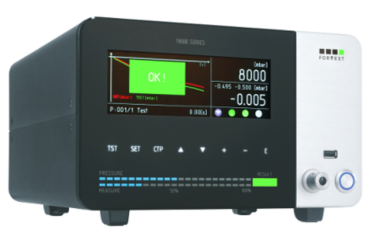Last Updated on: 14th August 2024, 03:03 pm
In today’s rapidly evolving logistics landscape, efficiency in warehousing and order fulfilment is more critical than ever. As companies strive to meet growing customer demands and streamline their operations, automation has emerged as a key solution. Among the latest advancements in automation are collaborative robots, or cobots, which are transforming how warehouses operate. These robots work alongside human employees to enhance productivity, accuracy, and safety, addressing many of the challenges faced by modern warehousing.
Benefits of Cobot Arms in Warehousing
The integration of cobot arms into warehouse operations has proven to significantly enhance efficiency and productivity. Unlike traditional manual labor, cobots can operate continuously without the need for breaks, fatigue, or reduced performance over time. Their advanced sensors and algorithms allow them to perform repetitive tasks with remarkable speed and precision. The benefits of cobots in warehousing extend beyond just speed and accuracy. Similar advancements have been observed with cobots in manufacturing, where they have revolutionized production lines and operational workflows. By automating tasks that were previously performed manually, cobots in both sectors offer significant improvements in overall efficiency and output.
Order accuracy is a crucial factor in customer satisfaction and operational efficiency. Cobots excel in this area by minimizing human error in picking and packing tasks. Equipped with sophisticated vision systems and intelligent software, cobots can verify product details and ensure that the correct items are selected and packaged. This automation reduces the likelihood of mistakes that can lead to order discrepancies or returns. For example, companies that have adopted cobots for their order-picking processes report a significant decrease in error rates, enhancing overall customer experience and reducing the costs associated with returns and exchanges.
Key Applications of Cobot Arms in Warehouses
One of the primary applications of cobot arms in warehouses is in the picking and packing processes. Cobots are equipped with specialized end effectors and vision systems that enable them to accurately select items from shelves and pack them for shipment. These robots can be programmed to handle various types of products and packaging requirements, making them highly adaptable to different warehouse environments. Integration with warehouse management systems (WMS) allows cobots to receive real-time data on inventory levels and order details, ensuring that the correct items are picked and packed efficiently.
Sorting and palletizing are other critical tasks that benefit from cobot technology. Cobots can automate the sorting of items based on factors such as size, type, or destination, streamlining the workflow within the warehouse. They can also handle the palletizing process, stacking items on pallets in an organized manner for shipping or storage. This automation reduces the need for manual intervention and increases the speed and accuracy of these processes. The ability of cobots to handle heavy or bulky items with precision further enhances their value in sorting and palletizing applications.
Implementation Considerations
Selecting the appropriate cobot for a warehouse depends on several factors, including the size of the robot, its payload capacity, and its flexibility. Each warehouse has unique requirements, and it is important to choose a cobot that matches these needs. For example, a warehouse with a high volume of small, lightweight items may require a cobot with precise picking capabilities, while a facility handling larger or heavier products may need a robot with a higher payload capacity. Consulting with experts and conducting a thorough assessment of warehouse operations can help in making an informed decision about the best cobot for the job.
Integrating cobots into existing warehouse operations requires careful planning and coordination. It is essential to ensure that the cobots are compatible with current warehouse management systems and other automation technologies. This may involve updating software, configuring interfaces, or modifying workflows to accommodate the new robots. Effective integration ensures that cobots can operate seamlessly within the existing infrastructure, maximizing their benefits and minimizing disruptions to ongoing operations.
Challenges and Solutions
The initial costs of implementing cobots can be a significant concern for many businesses. These costs include the purchase of the robots, installation, and any necessary modifications to existing systems. However, the long-term financial benefits of cobots, such as reduced labor costs and increased productivity, can outweigh the initial investment. Businesses can explore financing options or phased implementation strategies to manage the costs. Additionally, calculating the potential return on investment based on projected efficiency gains and cost savings can help justify the expenditure.
Integrating cobots into existing warehouse systems can present technical challenges, such as compatibility issues or integration difficulties. Addressing these challenges requires careful planning and collaboration with technology providers. Ensuring that cobots are compatible with existing warehouse management systems and other automation technologies is crucial for seamless operation. Involving technical experts and conducting thorough testing during the integration process can help mitigate these issues and ensure that cobots function effectively within the existing infrastructure.
Conclusion
Cobot Arms is revolutionizing warehouse operations by improving efficiency, accuracy, and safety. Their ability to handle repetitive and physically demanding tasks complements human labor, leading to enhanced productivity and cost savings. As businesses continue to adopt cobots and integrate them with other technologies, the future of warehouse automation looks promising. By embracing this technology, companies can achieve greater operational efficiency and better meet the demands of today’s fast-paced logistics environment.




